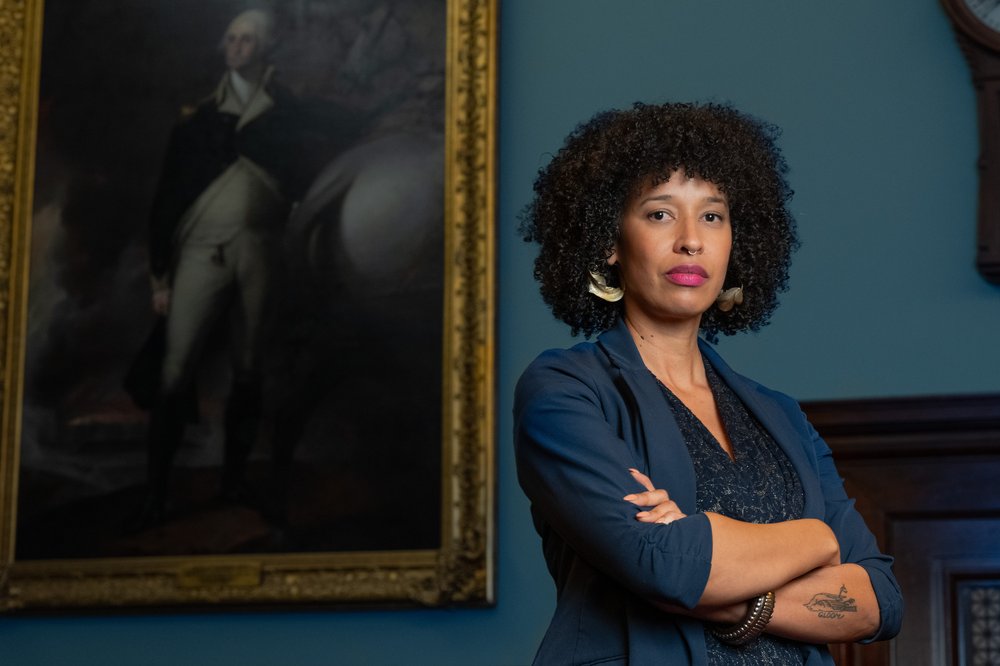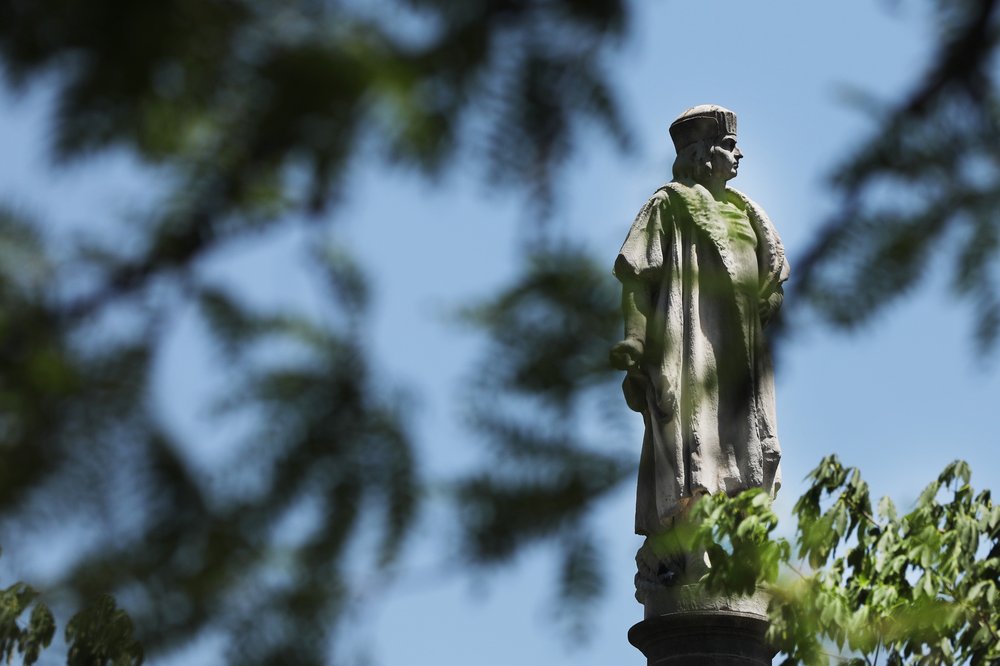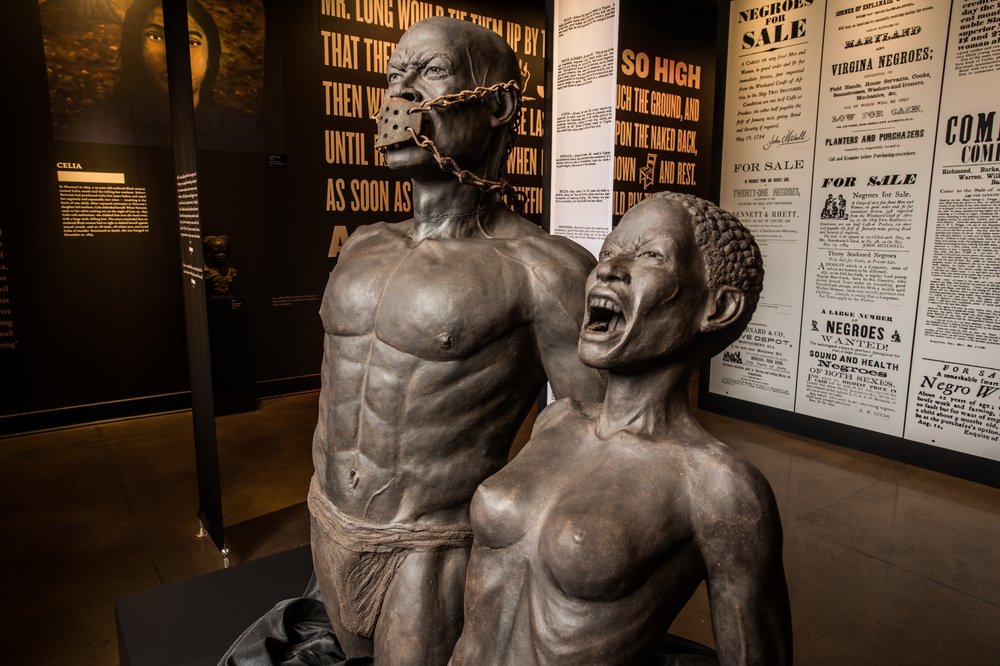NYC Council bill could make it ‘times up’ for public art, tributes to enslavers
Oct. 1, 2023, 9 a.m.
The proposal is part of a racial reckoning that continues, in fits and starts, after George Floyd’s murder in 2020.

A lot has changed for Sandra Nurse since 2020, when Black Lives Matter protests swept the country, targeting monuments honoring slave owners, the Confederacy and other symbols of white supremacy.
Back then, Nurse was an activist who wanted to, as she put it, “go and be a part of toppling something.” Today, at the age of 39, she represents the 37th City Council District in Brooklyn, and is sponsor of a bill that would require the city to (1) identify works of public art “that depict a person who owned enslaved persons or directly benefited economically from slavery” and (2) subsequently address what bill supporters say are offensive symbols of racism, taking steps ranging from adding explanatory signage to removal.
While Councilmember Nurse’s feelings about slave owners remain the same, her preferred tactics have certainly changed from the not-too-distant past, when protesters pulled down statues across the nation.
“As a legislator I have to look at what the law can do,” Nurse said in an interview with Gothamist.
Her bill, which is pending in committee, attempts to succeed where earlier efforts failed. In 2018, a commission appointed by former Mayor Bill de Blasio issued a 42-page report on monuments honoring controversial figures across the city. But the commission recommended the removal of just one statue, a towering Bronze depiction of J. Marion Sims, a notorious 19th-century doctor who conducted his experiments on the bodies of Black women. The statue was moved from Central Park to Green-Wood Cemetery.
Two years later, even as BLM protesters were toppling monuments to Confederates and colonizers in other cities, many of New York’s public artworks stayed in place, most notably the 131-year-old statue of Christopher Columbus at Columbus Circle.
Some elected officials and historians note that while anger over such monuments remains, especially within communities of color, a subtle shift has occurred, with some people advocating that, instead of removing statues, what’s needed are explanatory plaques that provide the public with contextual information about problematic historical figures.

“You know, the temperature has come down,” said Cynthia Copeland, a public historian who has served as co-chair of the Reparations Commission of the Episcopal Diocese of New York. “We are at a point where there has been some distance and I think that people have sort of taken a breath.”
Added context vs. removal
Nurse said her bill goes beyond monuments and artworks by addressing school names. For instance, she said Thomas Jefferson High School in East New York is an issue for its young occupants, many of whom are Black.
“I think it's really important that those students get a very deep education about Thomas Jefferson, who did horrific crimes against young Black people,” she said, adding that the community should have a say whether to change the name of the school or install a plaque explaining “the full story” of Jefferson, who enslaved more than 600 people in his lifetime, according to the Thomas Jefferson Foundation.
“I stare at it (a portrait of George Washington) every time I'm in that chamber. I'm now a council member in a very old governing institution that was set up during a time where my very existence would be illegal.
Sandra Nurse, New York City Council member
One particular artwork honoring a slave owner confronts her on a regular basis: A large portrait of George Washington that hangs from a wall inside City Hall.
“I stare at it every time I'm in that chamber,” said Nurse, who was born in Panama to a Black father and a mother whose family is from Ireland. “I'm now a council member in a very old governing institution that was set up during a time where my very existence would be illegal.”
Washington owned more than 300 slaves, according to the Mount Vernon Ladies’ Association. Nurse noted that the wealth he accrued from their forced labor “allowed him the privilege to participate in politics of that time.”
Her preferred solution for the portrait at City Hall would be for a plaque to be mounted nearby, so that visitors could better understand who Washington was.
“I don't think we are ready to take down George Washington statues as a country and I'm OK with that,” she said. “People can both be capable of great things and great outcomes and also of horrific crimes against humanity at the same time. And we live with those complexities to this day.”
One of Nurse’s allies on the legislation, Councilmember Shekar Krishnan, sounded a similar note.
“As compared to prior efforts, this bill adds context where appropriate,” said Krishnan. “From Washington to Columbus to [slave owner Peter] Stuyvesant, many of the figures who occupy our most valuable spaces were both historically important and deeply flawed human beings."
Challenges, logistical and political
Despite New York City's longstanding reputation as a melting pot of people and cultures, the city's history has a dark underside in which the slave trade was a "defining feature" of its origin story, according to a 2022 report by the Montgomery, Alabama-based Equal Justice Initiative. The report noted that 42% of the city’s white residents directly enslaved Black people by 1730, and that for much of the 18th century enslaved people comprised 20% of the population of New York City.

Aside from the hurdle of accruing political buy-in for the legislation, the bill also faces logistical challenges. The city owns 2,500 pieces of art and officials in the Adams administration say detailing the history of each of those works and the extent to which they pass a litmus test is a major task — one that would fall to the city’s Public Design Commission.
“The PDC would need a significant commitment of resources to conduct extensive research,” said Sideya Sherman, commissioner of the Mayor’s Office of Equity, at a Sept. 19 council hearing, while noting “we support the intent” of the bill, Intro 1085.
A spokesperson for Mayor Eric Adams, Liz Garcia, said the administration is reviewing the bill, part of a slate of antiracist legislation known as the Juneteenth Legislative Package.
The proposal has drawn backlash from conservatives and their news outlets: “Critics immediately branded the effort as cancel culture run amok” as a news report in the New York Post put it.
This is little more than an attempt by the radical left to rewrite our nation’s history.
Joann Ariola, New York City Councilmember
“This is little more than an attempt by the radical left to rewrite our nation’s history,” Councilmember Joann Ariola (R-Queens) told the Post. “These men all had an enormous impact on this country.”
Fox News contributor Raymond Arroyo told host Laura Ingraham on Sept. 20 that the debate over monuments was a distraction from more pressing issues, such as policing and the migrant crisis.
“Here’s my problem,” said Arroyo. “I understand everybody should hate slavery. It’s a sin. But don't do war with ancient slavery, do war with present slavery. Let’s get rid of all ties with China. That would be a good start: the biggest enslaver of people on the planet.”
In a statement to Gothamist, Councilmember Joe Borelli, who represents parts of Staten Island and who supported keeping the Columbus statue in Columbus Circle in place, wrote, “It must be Fall and that can only mean two things: the return of pumpkin spiced lattes and the City Council trying to tear down statues again.”
Nurse said she regularly receives angry messages from across the country.
“Today, somebody on my staff was like, ‘Sandy, someone sent a dick pic to us about this!’” she said. “First of all, from a trolling perspective, how is that even, like, relevant?”
Cautiously hopeful
Roberto Borrero, a New York-based kasike or chief of the Guainía Taíno tribe, who has long fought for the removal of the Columbus statue, expressed mixed feelings about the latest efforts.
“I think it's positive that we're having the conversation again,” he said. “I just don't see how it's going to be much different from previous attempts.”
Borrero noted that there are in fact five Columbus statues across the city. All of them, he said, should be taken down.
“Columbus ushered in the transatlantic slave trade,” he said. “This is the beginning of the genocide of indigenous peoples throughout this hemisphere.”
Some members of de Blasio’s Mayoral Advisory Commission on City Art, Monuments, and Markers agreed with that sentiment. They called the statue “an act of erasure of indigeneity and enslavement.”
However, a majority of the commissioners felt otherwise. They noted “the depth of pride” among some Italian Americans for Columbus and concluded that “the public at large is not ready to reckon with the legacy of this historical figure.”
But a recommendation by the commission to mount a plaque at the statue in Columbus Circle was never implemented. Borrero said that was thanks to a move by then-Gov. Andrew Cuomo to add the statue to the National Register of Historic Places.
Borrero said that a plaque presented the risk of “whitewashing” the impact Columbus had on indigenous communities, unless it was written by Native Americans.
“Are we taking softer, gentler approaches with Confederate statues? Would we take a softer, gentler approach if we were talking about someone who is related to the Nazi regime? For us, it's the same,” Borrero said.
Copeland, the historian, said in many cases she favored retaining controversial monuments and works of art, in part because “nobody wants their story erased” and because of the inherent educational opportunities.
“We have a huge city with lots of monuments and landmarks,” said Copeland. “What a great teaching space. The city is a laboratory.”
Nurse said she and her staff are currently “incorporating and negotiating feedback” on the bill from the Adams administration as well as members of the public. The legislation, she said, is wending its way through a Council that looks radically different from the legislative body that governed the city in centuries past.
“So many of us are women of color,” she said. “We come from immigrant backgrounds. Many of us, our families were part of slavery and so it's just something that I would like to see reflected as, as people like myself are now able to participate in democracy.”
Following A Year Of Pandemic And Protests, NYC Schools Kick Off Black Lives Matter ‘Week of Action’ Reparations are on the mind in Albany and New York City Council Christopher Columbus Statue In Central Park Vandalized With 'Bloody' Hands & Message: 'Hate Will Not Be Tolerated'